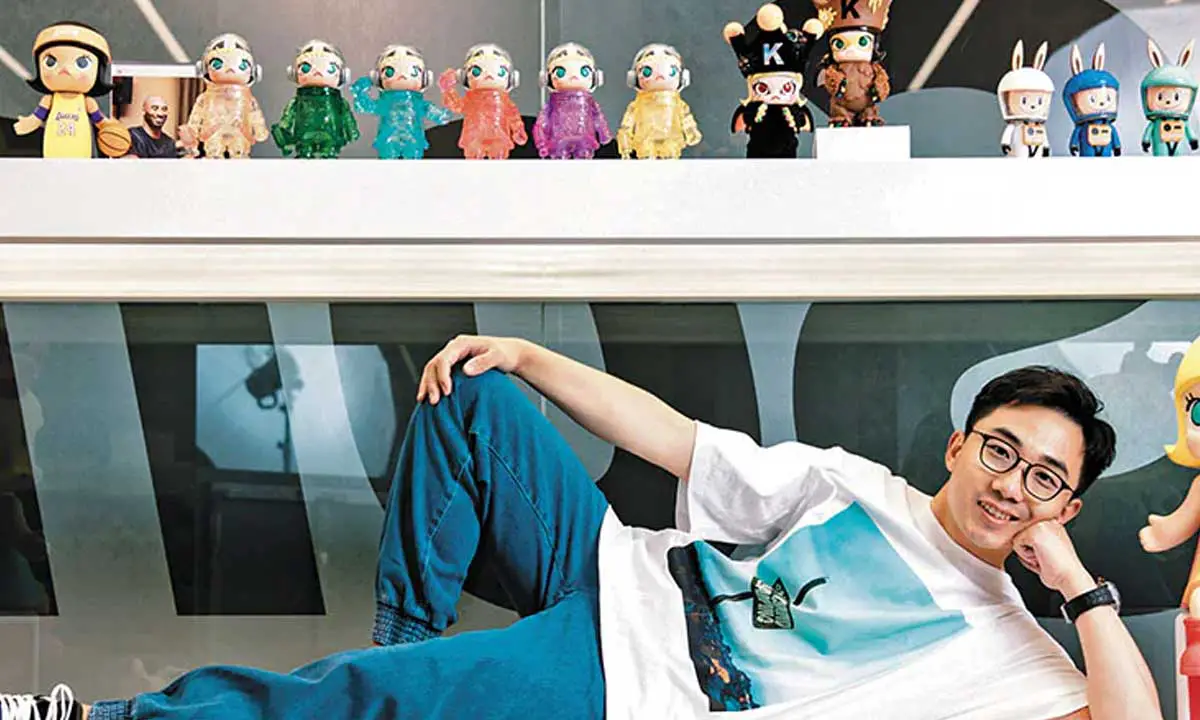In the fast-moving world of collectibles and pop culture, few stories are as captivating as the rise of Pop Mart International Group and its charismatic CEO Wang Ning. In a single day, Wang Ning’s fortune soared by an astonishing $1.6 billion, fueled by the global craze for a quirky little doll named Labubu. This small figure—with its bunny ears, mischievous grin, and endless variations—has become an unprecedented cultural and financial phenomenon. Here’s how this seemingly simple toy transformed a Chinese company into a worldwide powerhouse, reshaped the collectibles industry, and made Wang Ning an overnight sensation.
From Illustration to Icon: The Origins of Labubu

Labubu’s story begins not on a toy factory floor but in the creative mind of Hong Kong artist Kasing Lung. In 2015, Lung introduced Labubu as a character in his picture book series called The Monsters. The character was a mix of adorable and edgy—a rabbit-like creature with a hint of gremlin mischief. It wasn’t designed to be a commercial hit but rather a piece of artistic expression.
However, fate had other plans. In 2019, Pop Mart spotted the potential in Labubu’s unique design and partnered with Lung to bring this character to life in toy form. But Pop Mart didn’t just want to release another collectible figure—they revolutionized the experience by introducing the now-famous “blind box” model.
The Magic of the Blind Box: A Collector’s Dream
The genius behind Pop Mart’s success lies in its marketing innovation: the blind box. Unlike traditional toys sold in clear packaging, Pop Mart’s blind boxes are sealed. Buyers don’t know which figure they will get until they open the box. This adds an element of surprise and suspense, turning the purchase into a game itself.
With over 300 variations of Labubu released—ranging in colors, costumes, and special editions—collectors are eager to buy one box after another. The thrill of finding rare editions or completing a full set keeps the demand soaring. This strategy taps into human psychology—curiosity, the excitement of chance, and the desire for exclusivity.
Celebrity Endorsements and Social Media: The Perfect Storm
While Pop Mart laid the groundwork, the real explosion came from unexpected places—celebrities and social media. High-profile figures started flaunting Labubu dolls, turning them into fashion accessories and status symbols. Rihanna was seen with a Labubu dangling from her handbag. Blackpink’s Lisa made it a part of her public persona, and celebrities like Singapore’s Jamie Chua and India’s Bollywood star Ananya Pandey followed suit.
This celebrity endorsement propelled Labubu from niche collectible to global icon. Social media amplified the trend, with millions sharing images of their Labubu dolls. The hashtags soared, and Labubu became synonymous with youth culture, creativity, and cool.
Pop Mart’s International Takeover: From China to the World
The craze didn’t stay within Chinese borders. Pop Mart’s expansion into global markets has been nothing short of phenomenal. In the United States, Pop Mart’s shopping app became the most downloaded, with fans willing to pay 60% more than the Chinese retail price just to get their hands on the elusive Labubu dolls.
In the UK, the craze got so intense that stores were overwhelmed by crowds, leading Pop Mart to temporarily halt in-store sales for safety reasons. The international appetite for these collectibles demonstrates the power of well-crafted design paired with innovative marketing and cultural appeal.
Financial Milestones: The Numbers Behind the Phenomenon
The financial impact of Labubu on Pop Mart’s business is staggering. In 2024 alone, Labubu generated approximately $400 million in revenue, contributing significantly to Pop Mart’s total $1.8 billion revenue for the year. The momentum only accelerated in 2025, with the company’s revenue in the Americas soaring nearly ninefold in Q1 and European sales multiplying six times.
As a direct result, Wang Ning’s personal net worth rocketed to around $18.3 billion according to Forbes. The stock market responded with enthusiasm, with Pop Mart’s shares listed in Hong Kong surging 13.2% in a single day. Over the past year, the stock value has more than doubled, reflecting investors’ confidence in Pop Mart’s global potential.
Looking ahead, Pop Mart aims to achieve 20 billion yuan ($2.75 billion) in annual revenue by the end of 2025, with international sales expected to surpass half that figure—a clear indicator of the company’s global footprint and future growth trajectory.
A Cultural Shift: What Labubu Means for Chinese Pop Culture
Labubu’s success symbolizes a broader shift in global pop culture dynamics. For years, Western and Japanese brands dominated the collectibles and designer toy markets. Now, Chinese companies like Pop Mart are not only competing but reshaping the landscape with fresh ideas and local flair that appeal globally.
Pop Mart’s rise showcases how Chinese brands are learning to blend traditional culture, cutting-edge marketing, and digital engagement to captivate worldwide audiences. It reflects the growing appetite for unique, culturally rich products that offer more than just utility—they provide community, excitement, and identity.
Wang Ning’s Vision: Beyond Toys
Wang Ning’s journey from businessman to billionaire highlights not just a successful product but visionary leadership. His belief in the power of storytelling, design, and experience transformed Pop Mart from a local toy maker into a global brand.
Under his guidance, Pop Mart is exploring new product lines, digital innovations, and global partnerships. The company is venturing into augmented reality toys, exclusive collaborations with international artists, and expanding its retail presence in North America, Europe, and beyond.
Wang Ning’s focus is clear: to continue growing Pop Mart’s ecosystem where collectibles meet culture, and where every blind box unlocks not just a toy but a story, an emotion, and a shared experience.
The Labubu Legacy: More Than Just a Toy
The Labubu doll is more than a plaything—it’s a cultural icon, a financial powerhouse, and a symbol of modern entrepreneurial success. From its humble origins in a picture book to becoming a global sensation, Labubu has demonstrated the extraordinary potential of creativity combined with smart business strategy.
In a world saturated with entertainment options, Pop Mart’s success reminds us that the simplest ideas—when executed with passion, innovation, and timing—can capture hearts and wallets alike.
Conclusion: The Toy That Took Over the World
The story of Labubu and Pop Mart is a testament to how creativity, marketing savvy, and cultural resonance can converge to create something truly extraordinary. Wang Ning’s $1.6 billion windfall is just the beginning of what promises to be a long-lasting legacy in the world of collectibles.
As Pop Mart continues to expand globally and introduce new innovations, the toy industry—and indeed global pop culture—is watching closely. What started as a quirky character in a picture book has become a $1.6 billion sensation, proving that in today’s connected world, the next big thing can come from anywhere—even a tiny doll with bunny ears and a mischievous smile.

